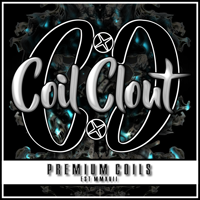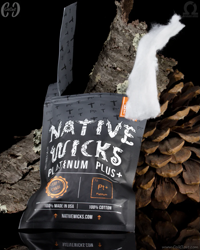Is There Lead in My Cannabis Vape Cartridge?

As of Jan. 1, 2019, cannabis products are tested for heavy metals, and lead levels above 0.5 parts per million don’t pass. Photo credit: A McCormack/Shutterstock.com
From January 2019, all cannabis products grown or manufactured in California were required to be tested for heavy metals, pesticides and the presence of mold. This is in addition to other tests specific to terpenes and edibles.
Last month, testing revealed the presence of lead in a small but measurable percentage of vape cartridges, rattling cannabis consumers, manufacturers, distributors and dispensary operators.
As part of adult-use marijuana legalization, California rolled out a three-phased lab testing process, with the third and final phase requiring mandatory testing for heavy metals. The presence of lead was discovered, because California has some of the toughest standards in the world when it comes to reducing the presence of this heavy metal at schools, in plumbing, in products like house paint, and in the sale and manufacturing of toys, jewelry and now, cannabis products.
We sought out two industry experts to help us understand exactly what happened and what consumers should consider about their cannabis purchases going forward.
Josh Wurzer, co-founder of SC Labs has been providing cannabis testing since 2010. Chris Emerson, Ph.D., is the co-founder and chief scientist of Level Blends, which creates cannabis cartridges, sublingual tablinguals and cannabis tablets.
Labs, Manufacturers Respond to the Presence of Heavy Metals in Cartridges
“The news about the cartridges became a big concern towards the end of 2018,” says Chris. “There was a big push by major players operating in the regulated market. They had to pass the safety standards the state had set, so this issue was definitely on people’s radar.”
“Quality control is now part of the cannabis conversation, and that’s a good thing,” says Josh. Happily, his lab hasn’t seen a large percentage of cannabis cartridges failing lab tests, because of the presence of lead. But he was aware that other labs were also discovering lead in cartridges.
For Josh and Chris, even a trace amount of lead is unacceptable, as there’s no safe level of lead exposure for humans, according to the World Health Organization.
Searching for the Source of Lead Contamination
Both Josh and Chris have been researching all of the possible ways that cannabis products can become contaminated with heavy metals.
“With cannabis flowers, it’s imperative that producers check all inputs in their environment. There could be metals contamination during processing. Manufacturers of extracting equipment or trimming machines use solder in their welds. Standard welds have lead in them. There are multiple areas along the way where cannabis could pick up contamination,” says Josh.
Meanwhile, Chris highlights the need to start testing while plants are in their infancy. “It starts with soil. There hasn’t been enough testing to determine if cannabis oil can become contaminated from heavy metals in soil, and if so, if it can be remediated,” he says.
“There are vast differences in the geographies where cannabis is grown and sourced—from locations chemically contaminated by previous agriculture use, to Mendocino or Humboldt counties, where best practices are used,” Chris continues. Labs see metals like arsenic and cadmium—not lead—showing up in tests of raw flowers, which can arise from contact with soil or soil amendments.
To that end, Josh’s lab tested empty cannabis cartridges to determine if the lead originated in the cartridge or a cannabis concentrate. “We’ve tested different components in the empty cartridges and found lead in them. Some manufacturers have already acknowledged as much,” he says. “We haven’t confirmed conclusively that the contamination is only coming from the cartridges, but they’re very likely the primary culprit.”
“In this pipeline, there are many ways that cannabis can make contact with many types of contaminants, not just lead. For example, with the tablets we produce, the excipients (a substance that helps with drug delivery in the body) we source from the pharmaceutical industry could theoretically contain residual contamination, even as the cannabis could be contaminant-free,” says Chris.
Chris’s example is why mandatory lab testing is a win for consumers in California’s tightly regulated market.
Cannabis Testing: A Work in Progress That Serves Consumers
“When you walk into a licensed, California cannabis retailer, you know more about their products than the fruit you get at Whole Foods,” says Chris. “Despite feelings about the expense of testing and overregulation, testing is very important. On the downside, legalization also resulted in many excellent small farmers getting pushed out of the market. This is very unfortunate. In fact, it’s the antithesis of what Proposition 64 was supposed to accomplish.”
Chris attempted to convince state regulators that he should be able to test his final product formula before it was placed into cartridges, and not after. “The State said no—that we had to test individual cartridges. And now, it’s because the State required us to test in this way that we found out about the lead issue.”
“Reputable labs need and want good oversight by the State’s Bureau of Cannabis Control,” says Josh. “We get several calls per week challenging our results and making us prove them, which we’re happy to do.
“The State is in our business now, which can be nerve-wracking, but it’s absolutely essential. Labs must do everything correctly. In Oregon, unscrupulous labs are giving out ridiculously high THC (tetrahydrocannabinol) numbers. Regulators are doing nothing about it—killing responsible labs that are doing everything the right way,” Josh explains.
“Before the first of last year, we were finding pesticides in 50% of flowers and 70% of concentrates. Now, because of mandatory testing, we’re at the 1–2% level. The industry is holding itself to higher standards. That’s good for everyone,” concludes Josh.
Nicotine E-Cigarettes Tested Positive for Heavy Metals & the FDA Did Nothing
A disturbing 2018 study confirmed the presence of toxic metals, including lead and arsenic, in e-cigarette devices, an issue that potentially impacts millions of people.
The study wasn’t conducted on cannabis vape cartridges, but like Josh’s lab findings, researchers reported that heavy metals, including lead, originated from the e-cigarette’s heating coils. The coils are used by a cartridge battery to heat nicotine oil—the same technology used in cannabis vape cartridges.
The Food and Drug Administration controls the regulation of e-cigarettes, and despite the troubling findings of this study, hasn’t addressed the presence of heavy metals found in nicotine- or cannabis-filled vape cartridges.
“There are a lot of corollaries with the e-cig industry,” says Chris. “Traditional leaf tobacco has operated under decades of nontransparency. E-juice carrier oils use questionable solvents like propylene glycol. E-cigs use super-heating metal coils in oxygen-rich environments. There’s toxicity associated with that, and the potential for heavy-metal contamination. And those flavors people vape aren’t meant to be inhaled.”
Over 70 harmful substances are found in cigarette smoke, including:
- Arsenic
- Ammonia
- Carcinogens
- Lead
As cannabis farmers and manufacturers struggle to comply with some of the strictest agricultural regulations in the country, America’s 10.5 million e-cigarette users are unknowingly vaping chemicals that would never be allowed in cannabis cartridges or related products.
More Research on Vaping Technology Is Needed
Chris makes the case that we need to understand more about vaping and how it affects the body. “Almost all studies have focused on what happens when you ingest pesticides or heavy metals. But inhaled products cross the blood-brain barrier quickly. The body’s responses may be different,” Chris says.
“We have no idea what happens when people are vaping trace amounts of toxic metals, or what the long-term effects of the inhalation of pesticides could be, but we can assume it’s unsafe. This is the first time scientists are beginning to look at this issue, and we’re doing so because of regulation,” Chris continues.
Manufacturers Are Responsive to the Public’s Concerns
The majority of cartridges for both cannabis and nicotine are produced in China, which operates under some of the tightest lead laws in the world. Though China has a much higher accepted lead level in its products than California does—40,000 parts per million as opposed to under 0.5 parts per million in the Golden State.
Most industry experts agree that cartridge makers are already responding to requests to eliminate lead from their production processes and from the cartridge itself.
“In 2018, we began testing our crude cannabis oil to determine if it was free of heavy metals,” Chris says. “We started to see issues in some of our cartridges. We contacted our vendor, and they identified the issue—a process a third-party manufacturer used during the production of the cartridge’s heating coils. We have a good relationship with our manufacturer and got things resolved.”
“China will respond to industry pressure. They’ll retool and find out exactly where the heavy metals are coming from. Our regulations are tough. Any amount of lead is too much, and this issue is easy to fix,” says Josh.
Will the Cost of CA’s Stringent Testing Requirements Be Passed On to the Consumer?
“For the consumer at the end of the supply chain, testing costs amount to pennies on the dollar. That’s a tax I’ll pay any time to know I have a lead-free product,” Josh notes.
I Got a Cartridge Last Christmas—Should I Use it?
“Products tested prior to Jan. 1, 2019 may or may not have been tested for heavy metals. Cartridges produced after the first of this year will have to pass metals testing. Products purchased in California, Massachusetts or Nevada have the most stringent testing regulations. Anything produced from this year forward can’t have lead levels higher than 0.5 parts per million,” says Josh.
“Do due diligence with your supplier and do the best you can. If you have health issues, don’t consume anything you don’t feel confident about. Cartridges tested under 2019 standards will have dates, so you can confirm when it was tested. Consumers always have the right to contact manufacturers directly and ask to see the product’s certificates of analysis,” says Chris.
Consumers Must Stay Educated on the Safest Way to Vape
The best way to protect yourself from the possibility of exposure to unsafe cannabis products is to buy lab-tested ones from licensed retailers. “We don’t recommend anything on the illicit market—not just because of heavy metals, but because of the possibility of the presence of residual solvents and a lot of pesticides,” says Chris.
If you’re vaping, you should also understand the mechanics of vaping, and try to locate cartridges that don’t use potentially harmful additives or materials. “Because cannabis is a fat-loving substance, we use glass and metal, not plastic components in our cartridges, because of the potential for leaching of accelerants or plasticizers,” says Chris.
Cannabis Legalization Is Helping Create Better, Safer Products
“California is doing a good job overseeing the labs. California grows the safest cannabis in the world. The fact that we know about this lead issue is a testament to the success of our lab-testing protocols. Now that this issue has been discovered, it should be less of a problem, and I think consumers will see it will go away quickly,” says Josh.
“Use platforms like HelloMD, where people can come for education. That’s your best line of defense. Think of all the other states with legal cannabis that don’t require this level of testing. The discovery of these contaminants is an unintended consequence of a regulated industry, but one that we welcome,” Chris concludes.
(This article first appeared here.)
Share:




